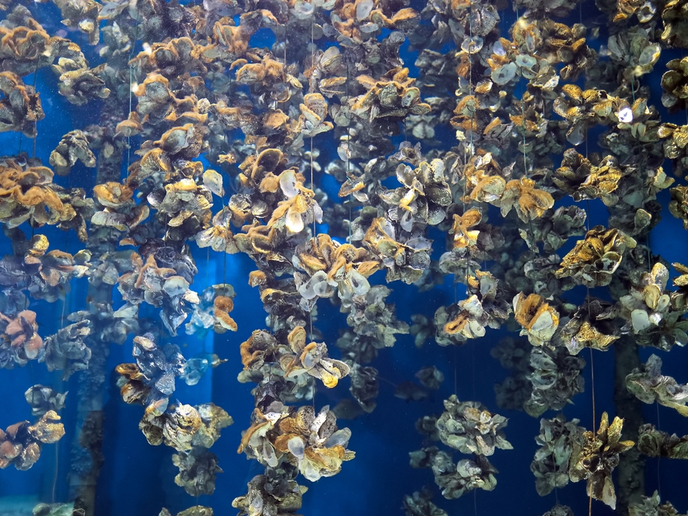Daily rhythms approach to improve oyster farm production
Feeding a burgeoning population in a sustainable manner is a global challenge. Aquaculture is an essential industry for meeting nutritional needs without over-harvesting marine environments. Cultivating aquatic species, oysters in particular, is also essential to restoring marine habitats. The NEUROSHELL project, undertaken with the support of the Marie Skłodowska-Curie Actions Home programme(opens in new window), provided important scientific training in aquatic neuroendocrinology and physiology and better insight into the developmental stages of Ostrea edulis (O. edulis), the European native oyster.
Implementing a daily rhythms method
One challenge to optimising oyster production is the timing of developmental stages, particularly spawning and the metamorphosis of larvae into spat. According to research fellow Mairi Cowan: “Research and innovation such as that in NEUROSHELL are essential to helping bivalve hatcheries improve the efficiency and control of reproduction, enable scaled-up production and provide security in seed supply.” Environmental variables such as temperature and light have a direct impact on the developmental stages of bivalves. Oyster hatcheries aim to optimise reproduction, increase synchronisation of development in cultivated populations, and promote high survival rates in mature organisms. Understanding the daily rhythm of environmental conditions is key to achieving this. Cowan carried out two 7-month in vivo studies on reproduction under ambient and fixed temperature and daylength conditions. Experiments varied the temperature and amount of light that developing adult oysters were exposed to, including constant light exposure for 24 hours a day, a simulation of natural daylength conditions, and a controlled ratio (18:6) of light to dark hours. The type of light was also considered, with experiments involving white, blue and red light sources. In addition to studying adult oysters, NEUROSHELL also investigated the effects of temperature and light on young developing oysters. Three temperature regimes were studied: constant high temperature (20 °C), constant low temperature (16.5 °C) and a cyclic temperature (15 °C to 18 °C). Experiments also controlled lighting regimes (12 light:12 dark) of white, blue or red light, as well as constant white light.
Physiological, biochemical and molecular techniques
In addition to controlling exposure to temperature and light, Cowan used a variety of tools to study what happened to the organisms under experimental conditions. In particular, qPCR(opens in new window) assays were used to identify reproductive neurohormones and glycoproteins – which are key markers of reproduction – as well as neurotransmitter receptors implicated in metamorphosis. These assays also shed light on molecular clockwork and melatonergic system components. NEUROSHELL gained much insight into the physiology of O. edulis by determining how different genes were expressed in tissues. All experiments included measurements of physical attributes such as weight, length, gonad development and oocyte stages. Visceral ganglia and gonads were dissected for molecular gene expression analyses. NEUROSHELL brought together academic institutions from Scotland and Spain and aquaculture companies in the UK. The Scottish Association for Marine Science hosted the experiments. The University of Cadiz in Spain provided training in the development of molecular tools. Oyster growers and hatcheries provided essential advice and oyster samples. With a focus on bivalves, NEUROSHELL also broadened the skillset of the project fellow. The data analyses performed by the project further marine biology research and support optimal aquaculture practices. Cowan concludes: “Results from NEUROSHELL may be used not only to directly improve hatchery production, but they have also contributed to laying the foundations for future research studies.”







